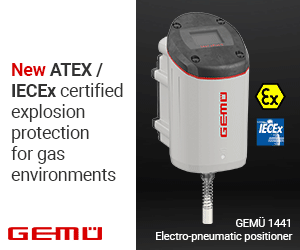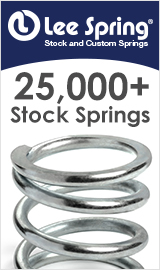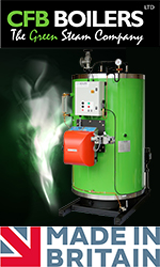Reliable connection for cooling water circuits
The right choice of materials prevents damage from corrosion by cooling water
Corrosion damage through aggressive media is a common problem. But even such a seemingly harmless liquid such as cooling water can have aggressive properties depending on the regional or local composition of the water and can cause creeping or quickly progressing corrosion in closed cooling water circuits. The solid metal connections of the Eisele LIQUIDLINE were specially developed for such demanding applications and have solved many a corrosion problem.
Cooling water circuits place special requirements on the connections and lines used. To meet these requirements Eisele offers a special product line, the LIQUIDLINE, for cooling water applications. Which materials and versions are needed depends on the particular application and the conveyed media. To design a reliable and long-lasting solution requires very close examination of the application conditions.
The design of the cooling water connection is based on the heat flow, the installation situation and the expected pressurisation. With respect to the material it is necessary to find a compromise that guarantees chemical resistance throughout the planned life of the system at a reasonable cost. A seemingly harmless medium such as cooling water has stringent requirements, since the danger of corrosion is strongly affected by the local conditions and the composition of the available cooling water.
Choice of the right material
Depending on the particular application, cooling water connections can be manufactured from brass, stainless steel or aluminum. The brass connections of the LIQUIDLINE feature dezincification-resistant elements for contact with media. This provides a high level of protection against corrosion in most standard applications. They were designed for applications where the use of expensive acid-resistant stainless steel is not yet required. Because cooling water, with a pH value in the range of 5 to 6, is only slightly acidic. The pharmaceutical industry or paint shops, for example, process substances with higher acidity, in which case stainless steel connections are better suited. In circuits equipped with aluminum heat sinks, on the other hand, aluminum connections are also needed in order to prevent electrolytic corrosion of the aluminum cooler. Liquid coolers are often made of aluminum due to the high thermal conductivity of the material and are designed for several years of service. To guarantee reliable connection technology throughout the entire life cycle, compatible materials have to be used. The time-proven design principles of the solid metal push-in connectors such as those of the LIQUIDLINE 2500 series were applied to corrosion-proof aluminum for these applications. For this purpose Eisele uses the special material EN AW-AlSi1MgMn. Conventional aluminum alloys do not have the necessary water resistance, which is why the manufacturers of liquid coolers are increasingly using this material.
Absolutely reliable seals for built-in safety
If absolutely reliable seals are needed in cooling water circuits – for safety reasons, for example – the choice of connection technology is very important: reliable pressure and temperature resistance, together with high flow rates, are essential. The technology used should also be able to withstand aggressive aqueous media, as well as solvents. Solutions to this problem can be found in the LIQUIDLINE 2400 and 2600 series. The threaded connections of the 2600 series feature high-quality seals made of FPM (Viton) and all sealing points on the tube, threads and housing are designed for a life-long seal. The connections of the 2400 series are even equipped with two seals and are designed for higher pressures up to 24 bar. With this seal configuration, the LIQUIDLINE can even be installed for example directly in control cabinets or cleanrooms – when installed correctly, there is no danger of leaks.
The problem of dezincification
Dezincification is a long-known process that can lead to corrosion damage on cooling water fittings. In rare cases it is observed on brass components that are in constant contact with water. The colour of the corroded area changes to reddish copper, indicating that it no longer has any inherent strength. Explained simply, the main alloy components of the brass dissolve: copper and zinc are oxidised into water-soluble salts. The zinc is carried away by the cooling water, while the copper accumulates as a sponge-like mass. This process generally occurs only in soft water with a high chloride content and low carbonate hardness.
Dezincification can be prevented by the right choice of materials and proper handling of the components – for example through compliance with specified tightening torques. The flow-optimised connections of the LIQUIDLINE are therefore manufactured from a special dezincification-resistant material. The danger of dezincification corrosion due to high chloride content and low carbonate hardness is effectively eliminated. Dezincification resistance is tested in accordance with ISO 6509. The LIQUIDLINE is therefore highly resistant in industrial water, steam, various saline solutions and many organic liquids. The material is approved by Lloyd’s Register for certain components in shipbuilding. The nickel-free fittings are an economical alternative to stainless steel solutions.
For the toughest cases: stainless steel
In some cases, stainless steel coolant connections should be used instead. Wherever standard materials such as plastic, brass and aluminum reach their limits in connection technology, the Eisele INOXLINE provides an economical stainless steel solution. Stainless steel features excellent protection against corrosion even with aggressive media and at high temperatures. Stainless steel connection components are therefore very durable and reliable. They can also easily be combined with all other materials. In addition, they are easy to clean, which makes them ideal for use in hygienic areas.
Stainless steel is especially resistant to acidic media and aggressive cleaners. In choosing the right materials one needs to consider not only the media used, but also the ambient conditions such as temperature and atmosphere. Stainless steel connections are necessary especially in case of pH values below 5. The same applies if ammonia or very high nitrate and chloride content is present in the medium itself, in any cleaners that are used or in the installation environment. Nitrate can be a problem especially in areas with intensive agricultural production.
The problem of electrolytic corrosion
Electrolytic corrosion can cause cooling water connections to literally disintegrate within a short time, for no apparent reason at first glance. In electrolytic corrosion, direct currents or direct current components in alternating voltages can cause damage to fittings. If two identical metal elements are connected by an external current to form one galvanic element, the metal element functioning as an anode breaks down. The disintegration starts with the base element of the alloy. The reason for electrolytic corrosion is often the presence of undetected neutral or residual currents. If the cause of such problems cannot be easily eliminated, stainless steel should be used here as well.
By switching to stainless steel connections of the Eisele INOXLINE, a renowned automotive company was able to solve corrosion problems practically overnight. Previously the customer was forced to replace leaking connections regularly and had already spent a year attempting to solve the problem by means of water treatment. The problem was solved by switching to stainless steel connections of the Eisele INOXLINE.
Before choosing the material for cooling water connections, it is always necessary to examine the specific conditions at the installation site. In this respect one needs to consider not only the media used, but also ambient conditions such as temperature and atmosphere.


























































































































